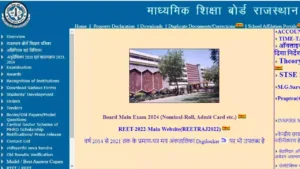Rice, a staple food in many Indian households, is often the centerpiece of a comforting dinner. But what if we told you your nightly bowl of rice might not be doing your health any favors? While rice itself isn’t inherently harmful, including it in your dinner routine can have some drawbacks, especially when it comes to portion control, blood sugar spikes, and nutrient deficiencies. So, ditch the spoon just yet! Let’s delve deeper and understand the potential downsides of rice dinners.
Blood Sugar Blues:
We all know that feeling after a carb-heavy meal – the dreaded energy crash. Rice, being a high-glycemic index (GI) food, can cause rapid blood sugar spikes followed by dips. This rollercoaster ride can leave you feeling sluggish, irritable, and craving more sugary treats.
Here’s the science breakdown: When you eat rice, your body quickly breaks it down into glucose (sugar) which enters your bloodstream. This sudden surge triggers the release of insulin, a hormone that helps your cells absorb glucose for energy. However, with refined white rice, this process happens too fast, leading to the blood sugar spike. As the insulin effect wears off, your blood sugar levels plummet, causing the crash.
Weight Woes:
While rice isn’t inherently fattening, it’s all about portion control. Heaping helpings of rice can easily add up in calories, especially when paired with rich curries or gravies. Over time, this calorie surplus can lead to weight gain.
Think about it: A single cup of cooked white rice contains around 200 calories. Pair that with a generous serving of dal makhani or a creamy butter chicken, and your calorie intake for the meal can easily skyrocket.
Nutrient Shortcomings:
White rice, stripped of its bran and germ during processing, loses a significant amount of fiber, vitamins, and minerals. These lost nutrients play a vital role in digestion, immunity, and overall health.
A table to illustrate the point:
| Nutrient | Brown Rice (per 1 cup cooked) | White Rice (per 1 cup cooked) |
|---|---|---|
| Fiber | 3.5 grams | 0.4 grams |
| Vitamin B1 (Thiamin) | 1.1 mg (74% DV) | 0.1 mg (6% DV) |
| Magnesium | 88 mg (21% DV) | 8 mg (2% DV) |
(DV: Daily Value)
The Power of Choice: Alternatives for a Healthier Dinner Plate
So, does this mean you have to banish rice from your dinner table forever? Not necessarily! Here are some smart swaps and strategies to make rice dinners a healthier choice:
-
Brown Rice Revolution: Opt for brown rice instead of white. Brown rice retains its bran and germ, making it a rich source of fiber, vitamins, and minerals. The higher fiber content also helps regulate blood sugar and keeps you feeling fuller for longer.
-
Portion Patrol: Be mindful of your rice intake. A single serving (around ½ cup cooked) is plenty for most adults.
-
Veggie Powerhouse: Load up your plate with non-starchy vegetables like broccoli, spinach, or cauliflower. These nutrient-dense options add volume and essential vitamins to your meal.
-
Protein Punch: Include a lean protein source like grilled chicken, fish, or lentils with your rice. Protein helps with satiety and keeps you feeling energized.
-
Spice it Up: Add spices like turmeric, cinnamon, or fenugreek to your rice. These spices not only enhance flavor but also offer potential health benefits like improved blood sugar control and reduced inflammation.
The Final Verdict:
Rice can still be a part of a healthy dinner plate, but with some smart choices. By opting for brown rice, controlling portions, and incorporating a variety of nutrient-rich foods, you can enjoy your favorite rice dishes guilt-free. Remember, a balanced and mindful approach is key to a healthy and satisfying meal.













